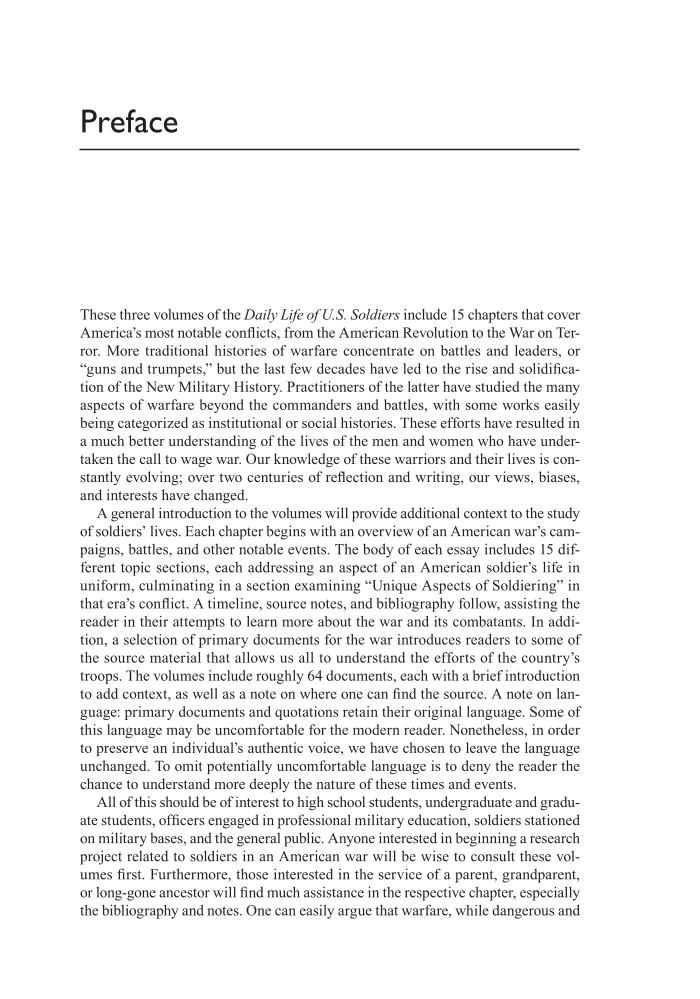Preface These three volumes of the Daily Life of U.S. Soldiers include 15 chapters that cover Amer i ca’s most notable conflicts, from the American Revolution to the War on Ter- ror. More traditional histories of warfare concentrate on battles and leaders, or “guns and trumpets,” but the last few de cades have led to the rise and solidifica- tion of the New Military History. Practitioners of the latter have studied the many aspects of warfare beyond the commanders and battles, with some works easily being categorized as institutional or social histories. These efforts have resulted in a much better understanding of the lives of the men and women who have under- taken the call to wage war. Our knowledge of these warriors and their lives is con- stantly evolving over two centuries of reflection and writing, our views, biases, and interests have changed. A general introduction to the volumes will provide additional context to the study of soldiers’ lives. Each chapter begins with an overview of an American war’s cam- paigns, battles, and other notable events. The body of each essay includes 15 dif fer ent topic sections, each addressing an aspect of an American soldier’s life in uniform, culminating in a section examining “Unique Aspects of Soldiering” in that era’s conflict. A timeline, source notes, and bibliography follow, assisting the reader in their attempts to learn more about the war and its combatants. In addi- tion, a selection of primary documents for the war introduces readers to some of the source material that allows us all to understand the efforts of the country’s troops. The volumes include roughly 64 documents, each with a brief introduction to add context, as well as a note on where one can find the source. A note on lan- guage: primary documents and quotations retain their original language. Some of this language may be uncomfortable for the modern reader. Nonetheless, in order to preserve an individual’s au then tic voice, we have chosen to leave the language unchanged. To omit potentially uncomfortable language is to deny the reader the chance to understand more deeply the nature of these times and events. All of this should be of interest to high school students, undergraduate and gradu ate students, officers engaged in professional military education, soldiers stationed on military bases, and the general public. Anyone interested in beginning a research project related to soldiers in an American war will be wise to consult these vol- umes first. Furthermore, those interested in the ser vice of a parent, grandparent, or long- gone ancestor will find much assistance in the respective chapter, especially the bibliography and notes. One can easily argue that warfare, while dangerous and
Document Details My Account Print multiple pages
Print
You have printed 0 times in the last 24 hours.
Your print count will reset on at .
You may print 0 more time(s) before then.
You may print a maximum of 0 pages at a time.







































































































































































































































































































































































































































































































































































































































































































































































































































































































































































































































































































































































































